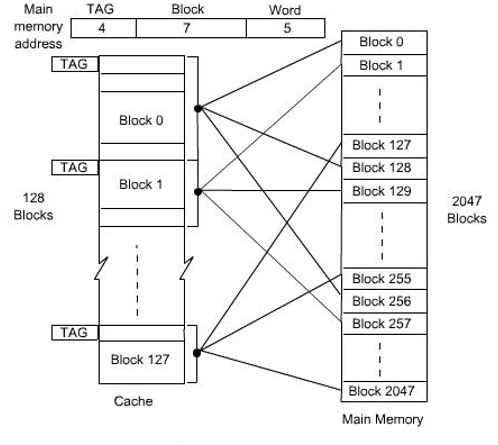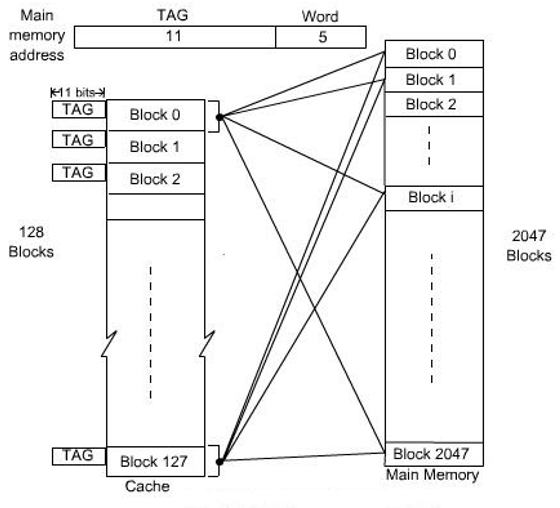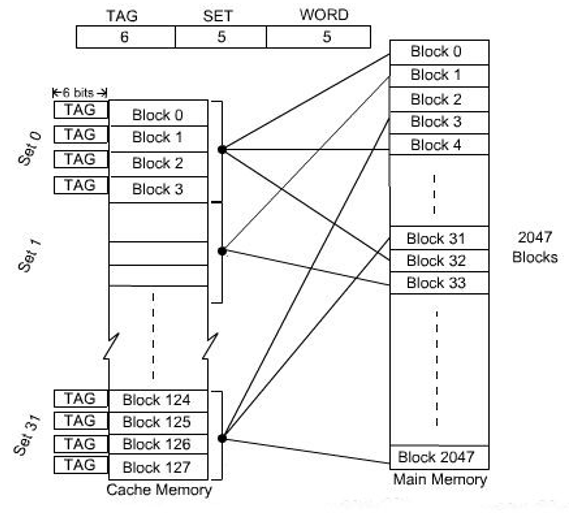Home »
Operating System
Memory Mapping and Its Types
Last Updated : December 30, 2025
Memory Mapping
The translation between the logical address space and the physical memory is known as Memory Mapping. To translate from logical to a physical address, to aid in memory protection also to enable better management of memory resources are objectives of memory mapping.
During cache mapping, the block is not brought from the main memory but the main memory block is simply copied to the cache. Cache memory generally tends to operate in some different configurations,
- Direct mapping
- Fully associative mapping
- Set associative mapping
1) Direct Mapping
In Direct mapped cache memory, each block mapped to exactly one location in cache memory.
A particular block of main memory can map the line number of cache is given by - Cache line number = (Block Address of Main Memory) modulo (Number of lines in Cache).

Direct Mapping of Cache
The direct-mapped cache is like rows in a table with three columns' main memory address are bits for Offset, Index, and Tag. The size of the fields depends on the capacity of memory and size of the block in the cache.
The least significant w bits are used to identify a word within a block of main memory. Tag corresponds to the remaining bits are used to determine the proper block of main memory. Line off-set or block is used to select a block to be accessed out of total blocks are available according to the capacity of the cache.
The data block or cache line that contains the actual data fetched and stored, a tag with all or part of the address of the data that was fetched, and a flag bit that shows the presence in the row entry of a valid bit of data.
2) Associative Mapping
In this type of mapping, any main memory block can go in any line of the cache. So we have to use proper replacement policy to replace a block from the cache if the required block of main memory is not present in the cache. Here, the main memory is divided into two fields: word field identifies which word in the block is needed and the tag field identifies the block. It is considered to be the fastest and the most flexible mapping form of cache mapping.

Associative Mapping of Cache
3) Set-associative Mapping
In this mapping technique, blocks of cache are grouped to form a set and a block of main memory can go into any block of a specific set.

Set Associative Mapping of Cache
This form of mapping removes the drawbacks of direct mapping. In Set-associative mapping, each word that is present in the cache can have two or more words in the main memory for the same index address. Set associative cache mapping is a combination of direct and associative cache mapping techniques.
This also reduces searching overhead present in the associative mapping. Here, searching is restricted to the number of sets instead of the number of blocks.
References
Advertisement
Advertisement